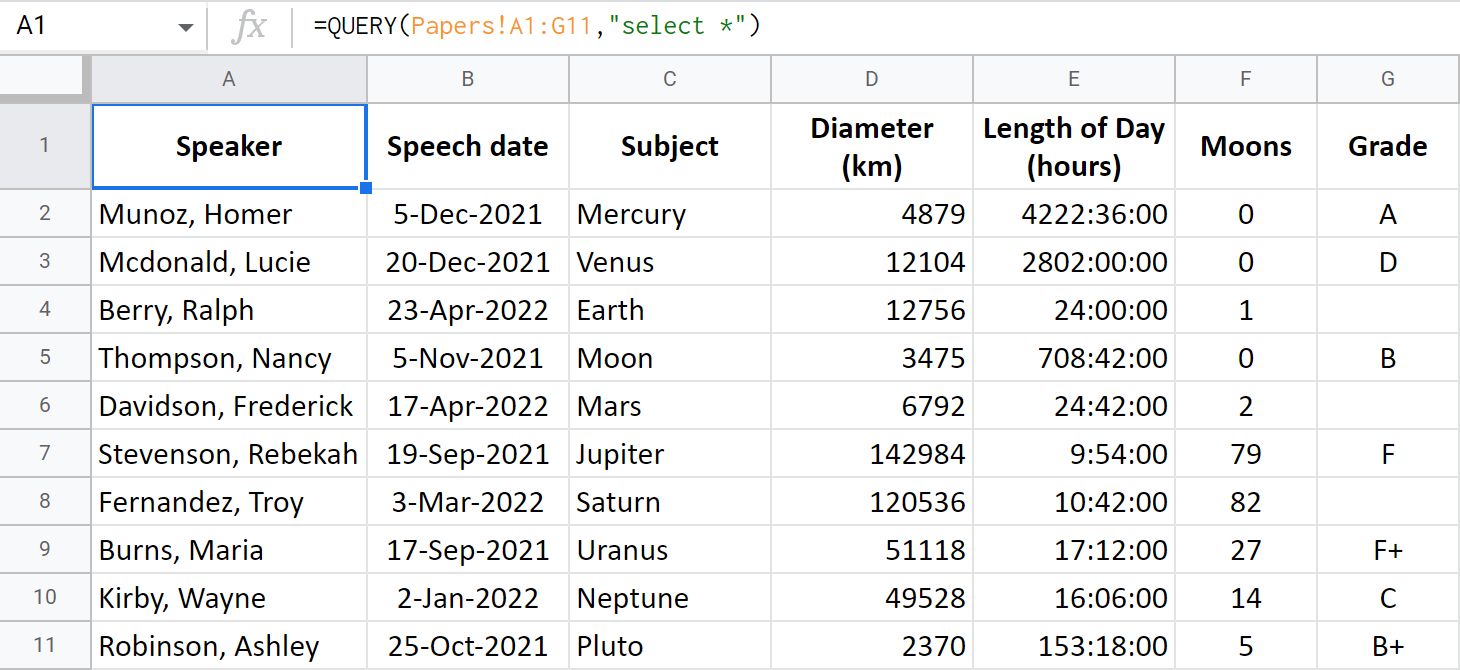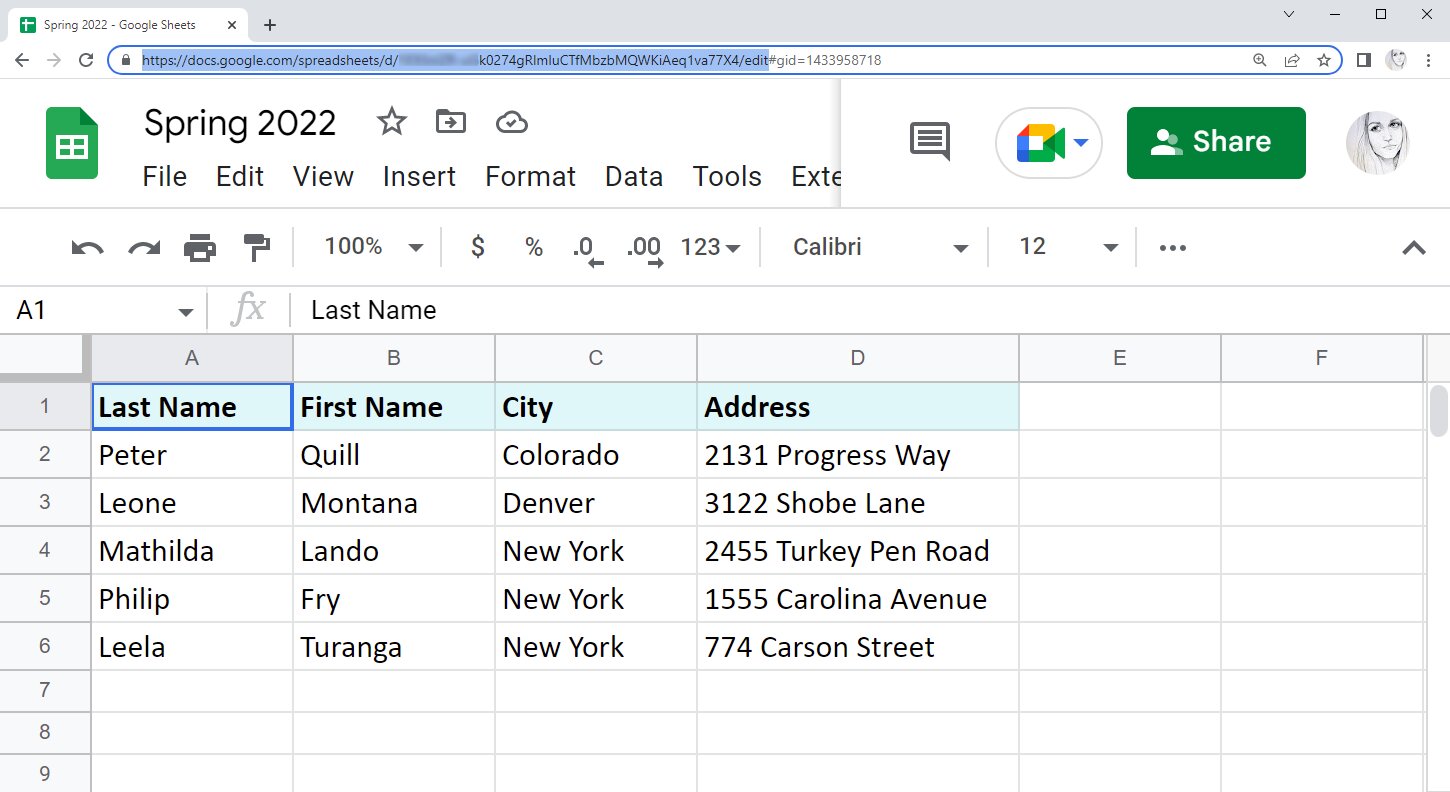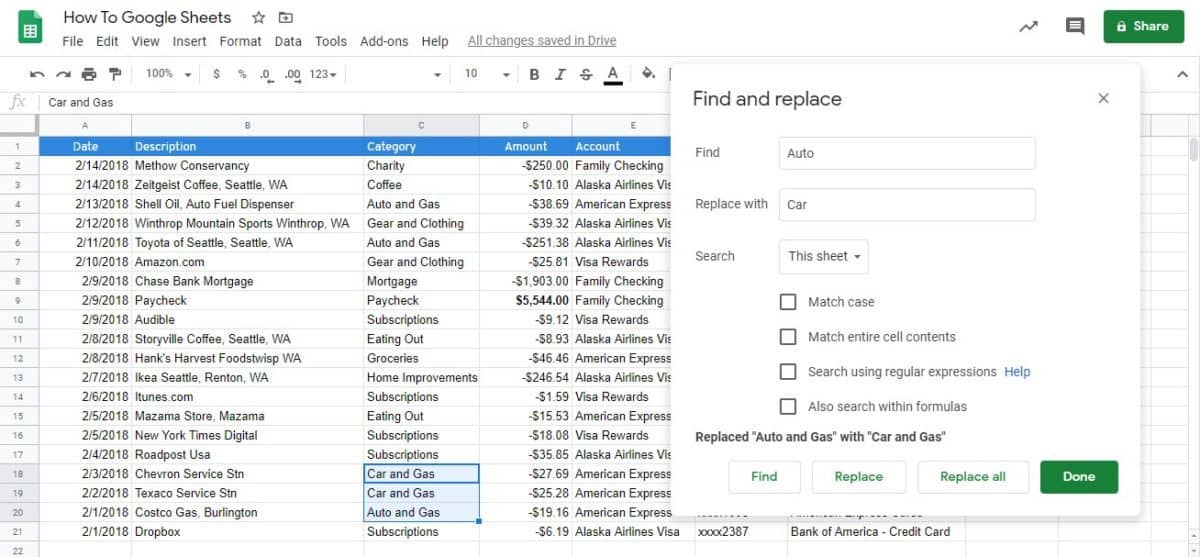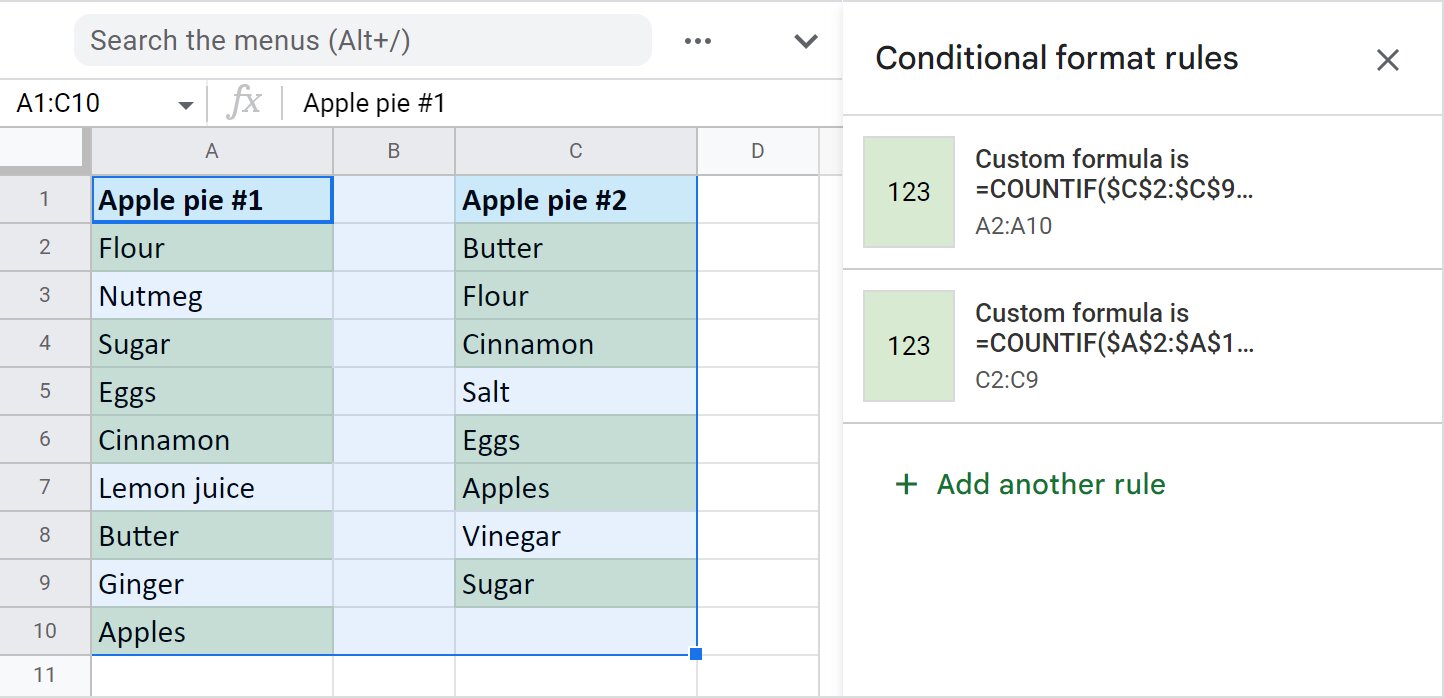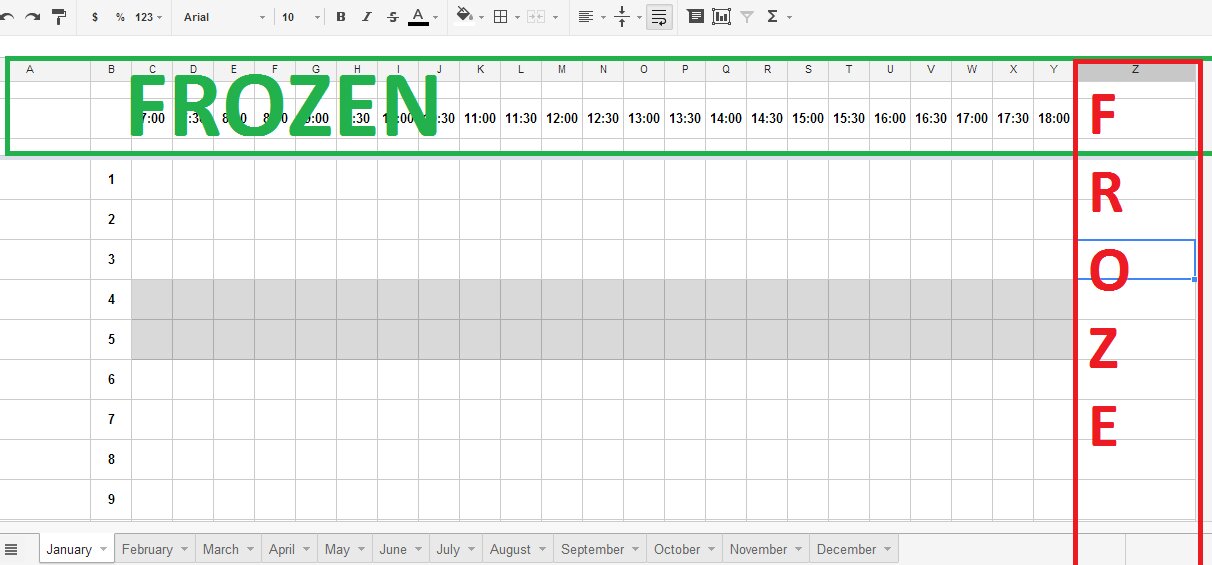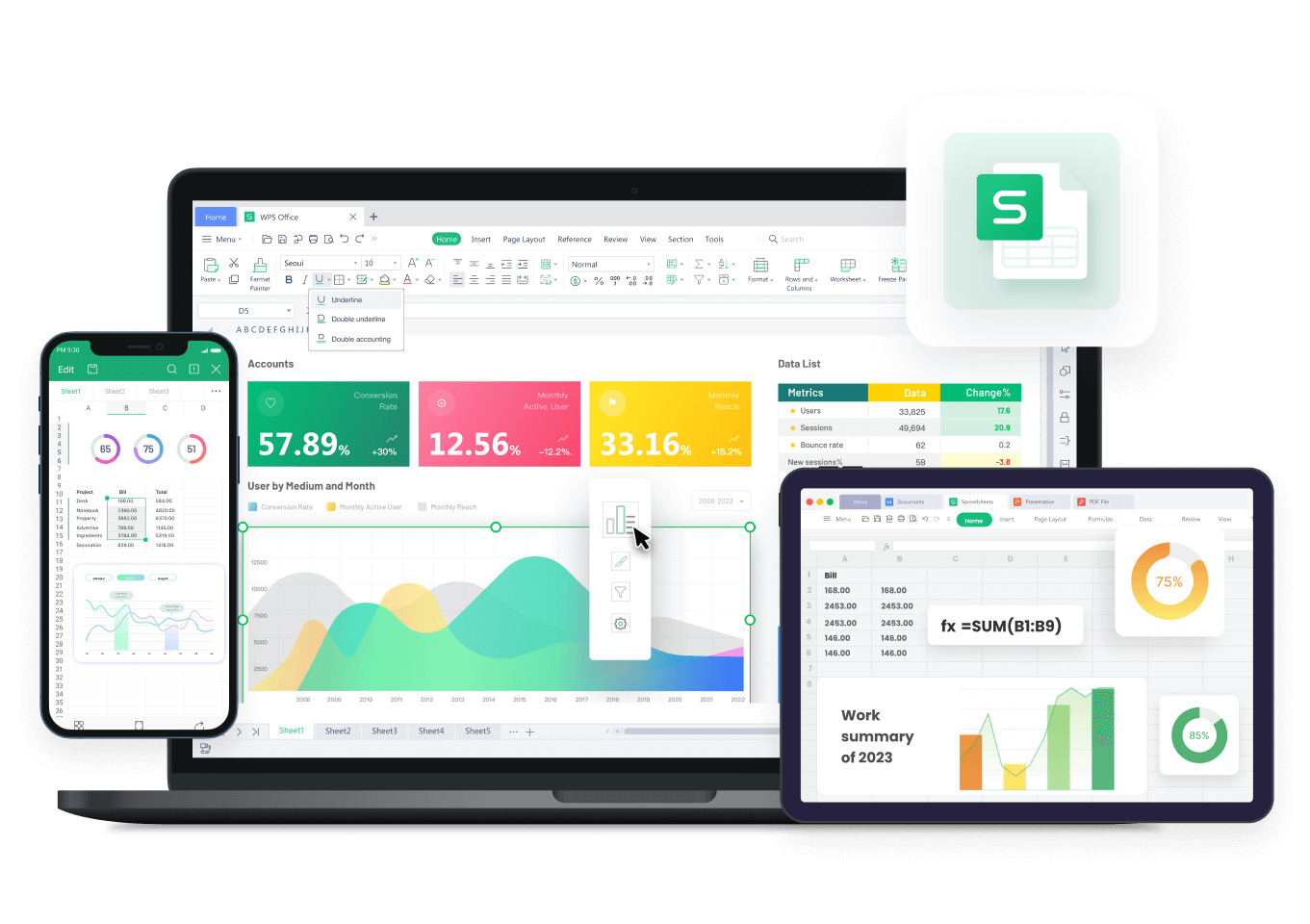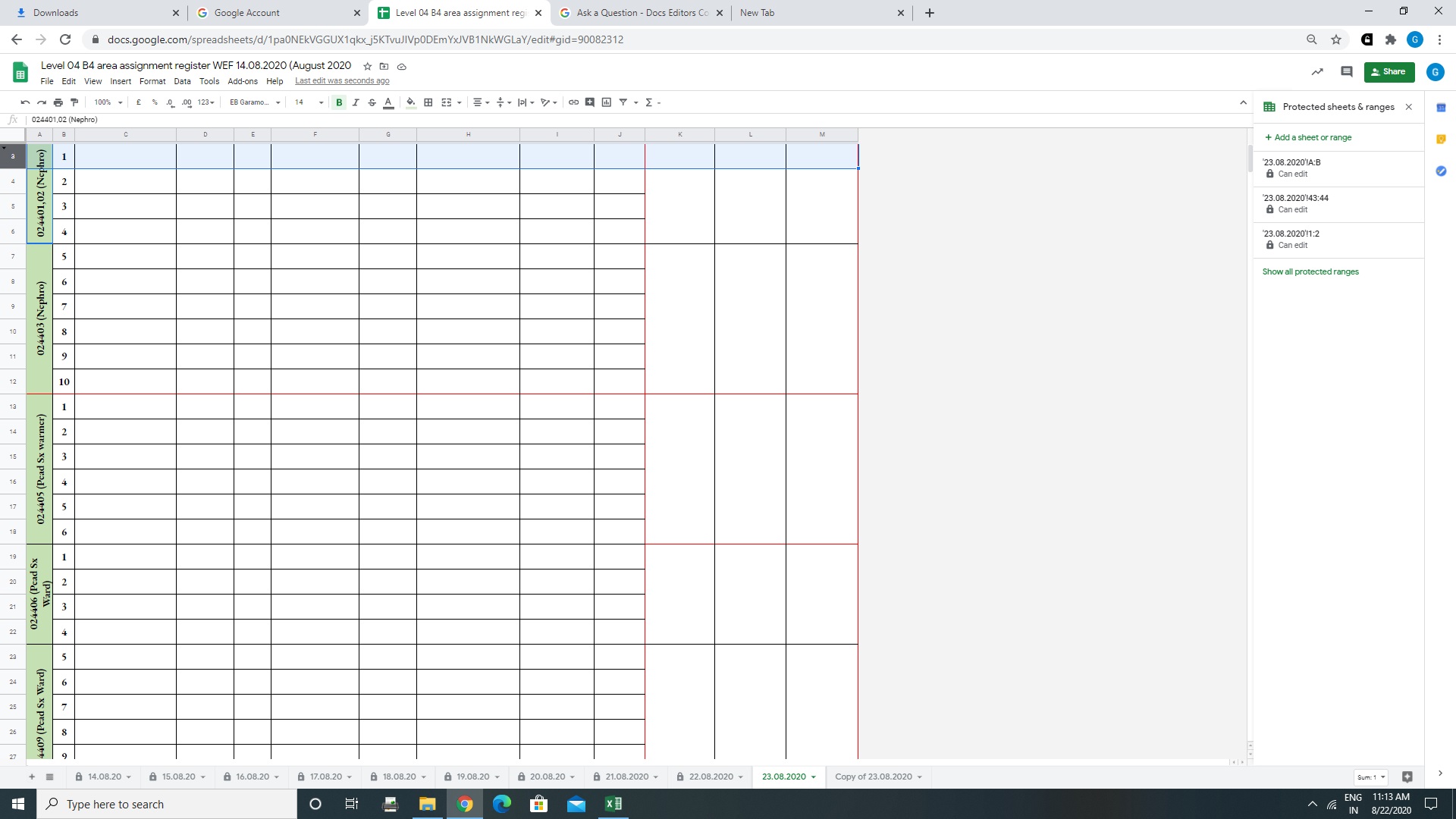Introduction
Google Sheets is a versatile and powerful tool that allows users to store, analyze, and visualize data. Among its many functions, the Query function stands out as a useful feature for filtering and manipulating data within a spreadsheet. By utilizing the Query function’s WHERE clause, users can further refine their data analysis and extract specific information based on certain conditions.
Whether you are a data analyst, a business professional, or a spreadsheet enthusiast, understanding how to use the WHERE clause in the Query function can greatly enhance your ability to extract valuable insights from your data. In this article, we will explore the ins and outs of the WHERE clause in Google Sheets’ Query function, providing you with the knowledge you need to effectively filter and manipulate your data.
Throughout this article, we will discuss the syntax of the WHERE clause, the various types of comparisons you can perform, and how to filter data using different types of values such as numbers, text, and dates. We will also cover how to use logical operators to combine multiple conditions within the WHERE clause. By the end, you will have a thorough understanding of how to use the WHERE clause in Google Sheets’ Query function to selectively extract and analyze data.
So, without further ado, let’s dive into the world of WHERE clauses and discover how they can revolutionize your data analysis in Google Sheets.
What is the Google Sheets Query function?
The Google Sheets Query function is a powerful tool that allows users to extract and manipulate data within a spreadsheet. It enables you to perform SQL-like queries on your data, making it easier to analyze and filter information based on specific criteria.
With the Query function, you can select columns, filter rows, sort data, and even apply aggregation functions to calculate summaries. It is especially handy when dealing with large datasets or when you want to combine data from multiple sheets or ranges.
The Query function uses a syntax similar to SQL (Structured Query Language), which is a language designed for managing and querying relational databases. However, in Google Sheets, the Query function works specifically on spreadsheet data, allowing you to leverage its capabilities without the need for complex database management systems.
By using the Query function, you can gain valuable insights from your data without the need to manually filter and manipulate it. This can save you time and effort when working with large datasets or when you need to perform complex analysis.
Moreover, the Query function’s flexibility allows you to perform a wide range of operations. You can use it to search for specific values, calculate aggregates like sum or average, apply logical conditions, and combine multiple queries with different filters.
Overall, the Google Sheets Query function empowers users to effectively analyze and manipulate data within spreadsheets. Whether you’re a data analyst, a business professional, or someone who wants to dig deeper into their data, mastering the Query function can open up a world of possibilities.
How to use the WHERE clause in the Query function?
The WHERE clause is a vital component of the Google Sheets Query function as it allows you to filter data based on specific criteria. Using the WHERE clause, you can specify conditions that must be met for a row to be included in the result set.
The syntax of the Query function with the WHERE clause is as follows:
=QUERY(data_range, "SELECT * [or fields] WHERE condition")
Here, data_range refers to the range of cells in your spreadsheet that contains the data you want to query, and condition represents the specific filtering criteria you want to apply.
The condition in the WHERE clause can be based on different types of comparisons, such as numerical values, text, dates, or logical operators. It allows you to specify precisely what data you want to include in your result set.
When using the WHERE clause, it’s essential to carefully construct your condition, ensuring it accurately represents the criteria you want to filter for. A slight mistake can result in incorrect or incomplete data being included in your output.
Let’s explore the various types of comparisons you can use with the WHERE clause:
- Numerical comparisons: You can use operators such as
=,<>,<,>,<=, and>=to filter data based on numerical values. For example,WHERE A > 10selects all rows where the value in column A is greater than 10. - Text comparisons: With text comparisons, you can use operators like
=,<>,CONTAINS,STARTS WITH, andENDS WITHto filter data based on text values. For example,WHERE B = 'Apple'selects all rows where the value in column B is equal to ‘Apple’. - Date comparisons: When dealing with date values, you can use operators like
=,<>,<,>,<=, and>=to filter data based on specific dates or date ranges. For example,WHERE C >= DATE '2022-01-01'selects all rows where the value in column C is greater than or equal to January 1, 2022. - Logical operators: You can also use logical operators like
AND,OR, andNOTto combine multiple conditions in the WHERE clause. This allows for more complex filtering criteria. For example,WHERE D = 'Red' AND E < 5selects all rows where the value in column D is ‘Red’ and the value in column E is less than 5.
By utilizing these different types of comparisons and logical operators, you can create intricate and precise conditions in the WHERE clause to filter your data effectively.
In the following sections, we will explore each of these comparison types and how to use them to filter data in more detail. So, let’s dive in and uncover the power of the WHERE clause in the Google Sheets Query function!
Syntax of the WHERE clause
The WHERE clause in the Google Sheets Query function allows you to specify conditions that determine which rows are included in the result set. Understanding the syntax of the WHERE clause is essential for effectively filtering your data.
The general syntax of the WHERE clause is as follows:
WHERE condition
Here, condition represents the specific filtering criteria you want to apply to your data. It consists of one or more conditions that need to be met for a row to be included in the result set.
The condition in the WHERE clause typically consists of a comparison between a column value and a specific criterion. It can involve numerical values, text, dates, or logical operators.
Let’s take a closer look at the syntax of the WHERE clause:
- Numerical comparison: To filter data based on numerical values, the syntax is:
column_name comparison_operator value. For example,WHERE A > 10selects all rows where the value in column A is greater than 10. - Text comparison: To filter data based on text values, the syntax is:
column_name comparison_operator 'value'. For example,WHERE B = 'Apple'selects all rows where the value in column B is equal to ‘Apple’. - Date comparison: When dealing with date values, the syntax is:
column_name comparison_operator DATE 'value'. For example,WHERE C >= DATE '2022-01-01'selects all rows where the value in column C is greater than or equal to January 1, 2022. - Logical operators: To combine multiple conditions, you can use logical operators like
AND,OR, andNOTin your WHERE clause. For example,WHERE D = 'Red' AND E < 5selects all rows where the value in column D is ‘Red’ and the value in column E is less than 5.
It’s important to note that the comparison operators vary depending on the data type. Numerical comparisons use operators like =, <>, <, >, <=, and >=. Text comparisons can use =, <>, CONTAINS, STARTS WITH, and ENDS WITH. Date comparisons also utilize =, <>, <, >, <=, and >=.
By understanding the syntax of the WHERE clause and the various comparison operators available, you can construct precise conditions to filter your data effectively and extract the desired information from your Google Sheets.
Now that we’ve covered the syntax of the WHERE clause, let’s move on to exploring the different types of comparisons you can perform within the WHERE clause and how to filter data based on numerical values, text, dates, and logical operators.
Comparisons in the WHERE clause
The WHERE clause in the Google Sheets Query function allows you to include specific conditions that determine which rows are included in the result set. These conditions involve comparisons between values and criteria, enabling you to filter data effectively.
There are different types of comparisons that you can use within the WHERE clause, depending on the data type of the column you are filtering. Let’s explore each of these comparison types:
- Numerical comparisons: Numerical comparisons involve comparing numerical values. You can use operators such as
=,<>,<,>,<=, and>=to filter data based on numerical conditions. For example,WHERE A > 10selects all rows where the value in column A is greater than 10. - Text comparisons: Text comparisons are used when working with columns containing text values. You can use operators like
=,<>,CONTAINS,STARTS WITH, andENDS WITHto filter data based on specific text criteria. For example,WHERE B = 'Apple'selects all rows where the value in column B is equal to ‘Apple’. - Date comparisons: When dealing with date values, you can use operators such as
=,<>,<,>,<=, and>=to filter data based on specific dates or date ranges. For example,WHERE C >= DATE '2022-01-01'selects all rows where the value in column C is greater than or equal to January 1, 2022.
By combining these comparison operators with the appropriate values and columns in your WHERE clause, you can effectively filter data based on specific criteria.
Keep in mind that the comparison operators and syntax may vary depending on the data type of the column. Numeric values require numeric comparisons, text values need text comparisons, and dates have their own set of comparisons. It’s crucial to use the correct operators and syntax to ensure accurate filtering.
In the next sections, we will explore each of these comparison types in more detail, providing examples of how to use them to filter data in Google Sheets. So, let’s continue uncovering the power of the WHERE clause and its various comparisons!
Filtering Data Using Numbers in the WHERE Clause
When working with numerical data in Google Sheets, the WHERE clause in the Query function allows you to filter data based on specific numerical conditions. By using operators such as =, <>, <, >, <=, and >=, you can effectively narrow down your data set to include only the desired numerical values.
Here are some examples of how you can filter data using numbers in the WHERE clause:
- Equal to: To filter for rows where a numerical value in a specific column is equal to a certain number, use the equal operator (
=). For example,WHERE A = 10selects all rows where the value in column A is equal to 10. - Not equal to: To filter for rows where a numerical value in a specific column is not equal to a certain number, use the not equal operator (
<>). For example,WHERE B <> 0selects all rows where the value in column B is not equal to 0. - Less than: To filter for rows where a numerical value in a specific column is less than a certain number, use the less than operator (
<). For example,WHERE C < 5selects all rows where the value in column C is less than 5. - Greater than: To filter for rows where a numerical value in a specific column is greater than a certain number, use the greater than operator (
>). For example,WHERE D > 1000selects all rows where the value in column D is greater than 1000. - Less than or equal to: To filter for rows where a numerical value in a specific column is less than or equal to a certain number, use the less than or equal to operator (
<=). For example,WHERE E <= 50selects all rows where the value in column E is less than or equal to 50. - Greater than or equal to: To filter for rows where a numerical value in a specific column is greater than or equal to a certain number, use the greater than or equal to operator (
>=). For example,WHERE F >= 500selects all rows where the value in column F is greater than or equal to 500.
By combining these numerical comparison operators with the appropriate values and columns in your WHERE clause, you can effectively filter and extract the desired numerical data from your Google Sheets. Experiment with different numerical conditions to find the information you need.
Now that we’ve covered filtering data using numbers in the WHERE clause, let’s move on to exploring how to filter data using text in the WHERE clause.
Filtering Data Using Text in the WHERE Clause
When working with text data in Google Sheets, the WHERE clause in the Query function enables you to filter data based on specific text conditions. By utilizing operators such as =, <>, CONTAINS, STARTS WITH, and ENDS WITH, you can effectively narrow down your data set to include only the desired text values.
Here are some examples of how you can filter data using text in the WHERE clause:
- Equal to: To filter for rows where a text value in a specific column is equal to a certain text, use the equal operator (
=). For example,WHERE A = 'Apple'selects all rows where the value in column A is equal to ‘Apple’. - Not equal to: To filter for rows where a text value in a specific column is not equal to a certain text, use the not equal operator (
<>). For example,WHERE B <> 'Red'selects all rows where the value in column B is not equal to ‘Red’. - Contains: To filter for rows where a text value in a specific column contains a certain substring, use the contains operator (
CONTAINS). For example,WHERE C CONTAINS 'book'selects all rows where the value in column C contains the substring ‘book’. - Starts with: To filter for rows where a text value in a specific column starts with a certain prefix, use the starts with operator (
STARTS WITH). For example,WHERE D STARTS WITH 'ABC'selects all rows where the value in column D starts with ‘ABC’. - Ends with: To filter for rows where a text value in a specific column ends with a certain suffix, use the ends with operator (
ENDS WITH). For example,WHERE E ENDS WITH 'xyz'selects all rows where the value in column E ends with ‘xyz’.
By combining these text comparison operators with the appropriate values and columns in your WHERE clause, you can effectively filter and extract the desired text data from your Google Sheets. Experiment with different text conditions to find the information you need.
Now that we’ve covered filtering data using text in the WHERE clause, let’s move on to exploring how to filter data using dates in the WHERE clause.
Filtering Data Using Dates in the WHERE Clause
In Google Sheets, the WHERE clause in the Query function allows you to filter data based on specific date conditions. By utilizing operators such as =, <>, <, >, <=, and >=, you can effectively narrow down your data set to include only the desired date values.
Here are some examples of how you can filter data using dates in the WHERE clause:
- Equal to: To filter for rows where the date value in a specific column is equal to a certain date, use the equal operator (
=). For example,WHERE A = DATE '2022-01-01'selects all rows where the value in column A is equal to January 1, 2022. - Not equal to: To filter for rows where the date value in a specific column is not equal to a certain date, use the not equal operator (
<>). For example,WHERE B <> DATE '2022-02-01'selects all rows where the value in column B is not equal to February 1, 2022. - Less than: To filter for rows where the date value in a specific column is less than a certain date, use the less than operator (
<). For example,WHERE C < DATE '2022-03-01'selects all rows where the value in column C is less than March 1, 2022. - Greater than: To filter for rows where the date value in a specific column is greater than a certain date, use the greater than operator (
>). For example,WHERE D > DATE '2022-04-01'selects all rows where the value in column D is greater than April 1, 2022. - Less than or equal to: To filter for rows where the date value in a specific column is less than or equal to a certain date, use the less than or equal to operator (
<=). For example,WHERE E <= DATE '2022-05-01'selects all rows where the value in column E is less than or equal to May 1, 2022. - Greater than or equal to: To filter for rows where the date value in a specific column is greater than or equal to a certain date, use the greater than or equal to operator (
>=). For example,WHERE F >= DATE '2022-06-01'selects all rows where the value in column F is greater than or equal to June 1, 2022.
By combining these date comparison operators with the appropriate values and columns in your WHERE clause, you can effectively filter and extract the desired date data from your Google Sheets. Experiment with different date conditions to find the information you need.
Now that we’ve covered filtering data using dates in the WHERE clause, let’s move on to exploring how to filter data using logical operators.
Filtering Data Using Logical Operators in the WHERE Clause
The WHERE clause in the Query function of Google Sheets not only allows you to filter data based on individual conditions but also enables you to combine conditions using logical operators. Logical operators such as AND, OR, and NOT provide powerful tools for refining and fine-tuning your data filtering process.
Let’s explore how to filter data using logical operators in the WHERE clause:
- AND operator: The
ANDoperator allows you to create compound conditions. By usingAND, you can specify that both conditions must be met for a row to be included in the result set. For example,WHERE A = 'Apple' AND B > 5selects all rows where the value in column A is equal to ‘Apple’ and the value in column B is greater than 5. - OR operator: The
ORoperator provides flexibility by allowing you to create conditions where either of the specified criteria can be met. For example,WHERE C = 'Red' OR C = 'Blue'selects all rows where the value in column C is either ‘Red’ or ‘Blue’. - NOT operator: The
NOToperator allows you to negate a condition. By usingNOT, you can specify that a certain condition should be false for a row to be included in the result set. For example,WHERE NOT D = 'Green'selects all rows where the value in column D is not equal to ‘Green’.
By combining these logical operators with the appropriate conditions and columns in your WHERE clause, you can create complex filtering logic to extract precisely the data you need from your Google Sheets. Logical operators are especially useful when you want to filter based on multiple criteria simultaneously or when you want to exclude specific values or conditions.
Remember to use parentheses to group conditions and ensure the desired evaluation order when combining multiple logical operators within a single WHERE clause. This helps clarify the logic and prevent any unintended filtering outcomes.
Now that we’ve covered filtering data using logical operators in the WHERE clause, let’s move on to exploring how to combine multiple conditions in the WHERE clause.
Combining Multiple Conditions in the WHERE Clause
The WHERE clause in the Query function of Google Sheets allows you to combine multiple conditions to create more complex and specific filtering criteria. By using logical operators like AND and OR, you can express conditions that involve multiple columns and criteria simultaneously.
Here’s how you can combine multiple conditions in the WHERE clause:
- AND operator: The
ANDoperator allows you to specify that multiple conditions must be met for a row to be included in the result set. For example,WHERE (A = 'Apple' AND B > 5)selects all rows where the value in column A is equal to ‘Apple’ and the value in column B is greater than 5. - OR operator: The
ORoperator allows you to create conditions where either of the specified criteria can be met. For example,WHERE (C = 'Red' OR C = 'Blue')selects all rows where the value in column C is either ‘Red’ or ‘Blue’. - Nested conditions: You can also create more complex conditions by nesting multiple conditions within parentheses. This allows you to control the order of evaluation and build intricate filtering logic. For example,
WHERE ((A = 'Apple' AND B > 5) OR (C = 'Orange' AND D < 10))selects all rows where either the value in column A is ‘Apple’ and the value in column B is greater than 5, or the value in column C is ‘Orange’ and the value in column D is less than 10.
By combining multiple conditions using the appropriate logical operators and parentheses, you can create complex filtering criteria that precisely define the data you want to include in your result set. This flexibility empowers you to extract valuable insights from your Google Sheets based on various combinations of criteria across different columns.
Remember to use careful syntax and parentheses placement when combining multiple conditions to ensure the desired evaluation order and avoid confusion in your filtering logic.
Now that we’ve covered combining multiple conditions in the WHERE clause, let’s move on to summarizing the key points we’ve discussed so far.
Summary
In this article, we have explored the powerful capabilities of the WHERE clause in the Query function of Google Sheets. The WHERE clause allows you to filter data based on specific criteria, narrowing down your data set to include only the desired information.
We started by understanding the syntax of the WHERE clause and its usage within the Query function. We learned how to construct conditions using numerical comparisons, text comparisons, and date comparisons. These comparisons involved operators such as =, <>, <, >, <=, and >= to specify precise filtering criteria.
We also explored how to perform complex filtering operations by utilizing logical operators like AND, OR, and NOT. These operators allowed us to combine multiple conditions and create more intricate filtering logic.
By combining these various techniques, you can effectively filter data based on numbers, text, dates, and complex conditions to extract the specific information you need from your Google Sheets.
Whether you are analyzing data, conducting research, or managing your business information, mastering the WHERE clause in the Query function can greatly enhance your data analysis capabilities. It allows you to transform your raw data into meaningful and actionable insights.
So go ahead and experiment with the WHERE clause in your own Google Sheets. Try different comparisons, operators, and conditions to filter your data and discover the hidden patterns and trends within.
Remember, understanding how to effectively filter and manipulate data is crucial in harnessing the full potential of Google Sheets and enabling data-driven decision-making.
Now that you have a solid understanding of the WHERE clause and its usage in the Query function, you are well-equipped to take your data analysis skills to the next level. Dive into your spreadsheets, explore the power of the WHERE clause, and unlock the valuable insights stored within your data.
Conclusion
The Google Sheets Query function’s WHERE clause is a valuable tool for filtering and extracting specific information from your data. By understanding how to construct conditions using numerical comparisons, text comparisons, date comparisons, and logical operators, you can effectively filter your data and uncover meaningful insights.
Throughout this article, we have discussed the syntax of the WHERE clause and its various applications. We have learned how to filter data based on numbers, text, dates, and combinations of conditions, allowing for precise and targeted data analysis.
Learning to use the WHERE clause effectively in the Query function empowers you to harness the power of your data and make informed decisions. Whether you are a data analyst, a business professional, or simply someone looking to explore their data, the WHERE clause is an essential tool in your data analysis toolkit.
Remember to experiment and refine your queries as you gain a deeper understanding of the WHERE clause. By leveraging this powerful functionality, you can extract actionable insights, spot trends, and make data-driven decisions.
So, start exploring the capabilities of the WHERE clause in the Query function and unlock the full potential of your Google Sheets. With each query, you’ll gain a deeper understanding of your data and discover valuable information that can drive your success.
Now, armed with your newfound knowledge, create powerful queries, filter your data, and embark on your journey to unlock the hidden insights within your Google Sheets.







